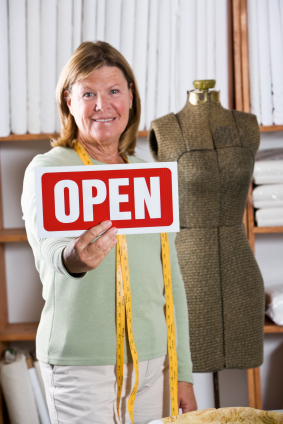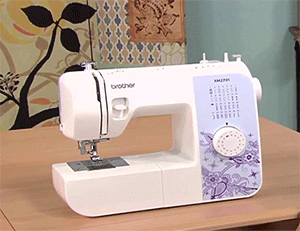 What could possibly be more fun than to turn your favorite hobby into a profitable business?
What could possibly be more fun than to turn your favorite hobby into a profitable business?
Many of us can’t imagine making money doing what we love the most. I am living proof that it can happen! Follow me as I take you through a variety of exciting steps to point you in that direction.
HOW IT ALL STARTED
Many days after school I came home to a really pretty dress or a petticoat my Mother had sewn for me. She would lay it out across my bed for me to see when I walked into my bedroom. I also remember that she would splurge sometimes and pay $12 per dress to a well known seamstress in town. It was a wonderful surprise then and a precious memory now.
Today there aren’t many seamstresses in town. A great many shopping malls full of all kinds of stores and loaded with too many garments have taken their place. Alterations are also a thing of the past.That is interesting to me since not many people can even sew on a button any more. I’m thinking that it may just be one of the reasons that the guys started wearing their drawers (that’s an old fashioned term for underwear) down around their hips with their underwear hanging out! Just saying.
EVERYBODY IS LOOKING FOR YOU!
This is where YOU come in! All those people buying all those clothes that don’t fit need you!
I promise you, most of them don’t know where to go for help. They may start with taking their garments to the cleaners. Unless there is a seamstress in their store, they have a problem. Sending garments out is a problem for both the cleaners and the seamstress. The cleaners usually are not set up for fittings. The customer may or may not have pinned the hem in correctly. The garment gets sent out (sometimes out of town) and the poor seamstress has to do the best she/he can, hoping they get it right. Otherwise, guess who doesn’t get paid? Yep, you’re right. The seamstress, in most cases, gets a commission at the end of the month and if there is a problem, it’s the seamstress’s fault. They did the work, so they don’t get paid.
FIND YOUR NICHE
All you have to do is get the word out that you do alterations, or embroidery, or whatever it is that your area needs that you can provide. Trust me, before long you’ll be booked for several weeks, possibly months, with all the business you can handle and then some. Your biggest decision will be whether or not you can take any more customers in.
Depending on your particular interests, you may want to include custom sewing, quilting, embroidery and/or any number of different services. It will most likely take a little trial and error for you to find your niche. But, it won’t take long and you will be doing what you love the most – most of the time.
WHAT DO I NEED TO GET STARTED?
The great news is that you probably have most of what you need to get started and won’t have to spend a great deal of money. Of course, that will be determined by you after you decide just what you want to offer your customers. These are a few things you will need to get started working at home.
- A price list – you will need an idea of what you are going to charge for your services.
- If you don’t already have one, you will need a Sales Tax Permit which can be obtained very easily online. Just go to your State Comptroller website for more information and to obtain a Sales Tax Permit.
- You will need to go to your local Court House to register the name of your business. There is a minimal fee (approximately $10).
- You will want to order some business cards so you can advertise your business.
- A place to sew and a sewing machine
- A serger is not mandatory but will make your work faster and more professional. If you have a serger that does a coverstitch, that’s even better
- A variety of thread colors
- Hangars
- Plastic garment bags are not mandatory but make it easier for you to separate your finished work from the unfinished and makes your work more professional
- Invoices/Work Orders – blank ones leave more room for instructions
- A variety of zippers (just a few basic sizes and colors), hooks and eyes
- A garment rack
- A small cash register or cash box.
PRODUCTS TO HELP YOU GET STARTED
![]() There are a variety of machines available if you don’t already have one. You can take a look at our sewing machine reviews. One of our suggestions is the SINGER 9960 Quantum Stylist 600-Stitch Computerized Sewing Machine. It has tons of features: 600 built-in stitches, 13 styles of fully automatic buttonholes, 5 different fonts, 13 presser feet and lots of automation at a very reasonable price.
There are a variety of machines available if you don’t already have one. You can take a look at our sewing machine reviews. One of our suggestions is the SINGER 9960 Quantum Stylist 600-Stitch Computerized Sewing Machine. It has tons of features: 600 built-in stitches, 13 styles of fully automatic buttonholes, 5 different fonts, 13 presser feet and lots of automation at a very reasonable price.
![]() You will definitely want to include a serger/coverstitch machine such as the Brother 2340CV Serger Cover Stitch for finishing hems and edges. You’ll also want to include good quality, economical thread like the Maxi-Lock Cone 3000 Yards Thread that will last through many serging projects, also in a variety of colors .
You will definitely want to include a serger/coverstitch machine such as the Brother 2340CV Serger Cover Stitch for finishing hems and edges. You’ll also want to include good quality, economical thread like the Maxi-Lock Cone 3000 Yards Thread that will last through many serging projects, also in a variety of colors .
![]() You should consider a Collapsible Commercial Grade Clothing Rack, 12 piece set of Jobar Open-Ended Slacks Hangars and a box of 100 Clear Plastic Top hangars to keep all those sewing projects in order.
You should consider a Collapsible Commercial Grade Clothing Rack, 12 piece set of Jobar Open-Ended Slacks Hangars and a box of 100 Clear Plastic Top hangars to keep all those sewing projects in order.
A great book to include in your sewing library is the Vogue Fitting: The Book of Fitting Techniques, Adjustments, and Alterations.
HELPFUL INFORMATION
Start your business by letting everyone you know that you are available to do alterations, or whatever it is that you want to sell. I have put ads in the paper, on the radio, in the Yellow Pages, and online. They all help, but the best advertising comes by word of mouth – good and bad.






